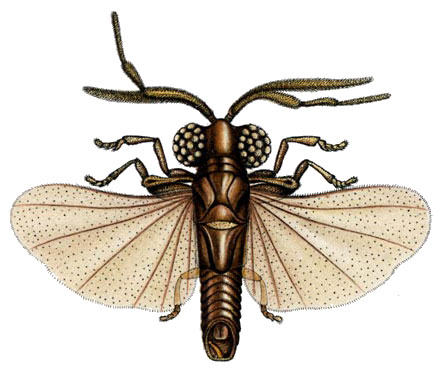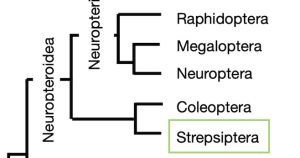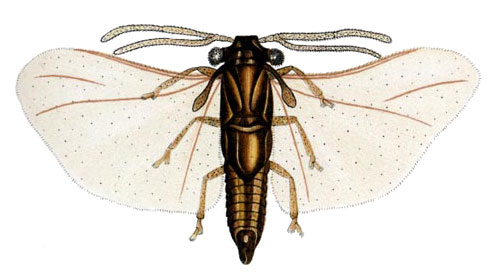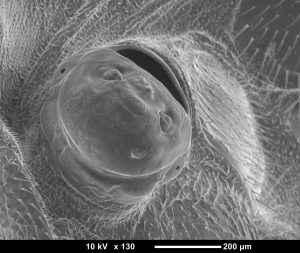35 Orders of Insects: Strepsiptera


Order Strepsiptera
Strepsiptera
- common names: twisted wing parasites, stylopids, stylops
- from Greek: streptos = twisted, ptera=wings; reflects the twisted wings of the male
- about 600 spp worldwide; not common
- larvae and females are internal parasites of other insects
- female usually permanently endoparasitic in host
- adults non-feeding as matures
- hypermetamorphosis – larvae change body form as they mature
- Recently confirmed to be a sister-group to Coleoptera

Characteristics of Strepsiptera
Adults
- very small endoparasites; profound sexual dimorphism
- male have protruding eyes with few facets, greatly reduced mouthparts and do not feed; branched antennae;
- male fore wings are club-like; hind wings fan-shaped with few veins,
- females larviform; reduced mouthparts; legless, wingless & partially protrude from host abdomen
Immatures
- immature stages (larvae) hatch within the adult female body
- first instars (planidia) are free-living and highly mobile with three pair of thoracic legs; exit the female abdomen to locate and enter body of a new host
- once burrowed into a new host, subsequent instars are legless, grub-like internal parasites
Notes:
Different Strepsiptera families parasitise different hosts, which include silverfish, ants, grasshoppers, preying mantids, leafhoppers, bugs, cockroaches, flies, wasps. The parasite does not eat vital organs or kill the host.
The parasitic lifestyle has produced great morphological and developmental modification, historically making it extremely difficult to place Strepsiptera in the insect family tree. Strepsiptera’s phylogenetic position has been the subject of consternation and debate. Recent molecular sequencing studies place them as sister-group to Coleoptera.
More information:
Links: Strepsiptera life history with video
Is it an Alien or an evil pokemon??

This scanning electron micrograph shows neither alien or evil pokemon character, but actually an unusual and elusive insect, commonly called a “stylops” (Order Strepsiptera). Stylops are endoparasites, which means they spend most of their lives living in and feeding on the bodies of other insects. The photo (right) shows an adult female stylops protruding from the abdomen of a fruit fly! She has no legs but is permanently stuck protruding from the fruit fly abdomen until she gives “birth”. What looks like her ‘gaping mouth’ is actually a brood canal opening. Her free-floating larvae live inside her body cavity feeding on her own haemocoel (insect equivalent of blood). When the worm-like larvae are big enough, they exit her body via the brood canal and wiggle off to find another host insect to burrow into it and begin to feed. When the larva is ready to morph into an adult it protrudes from the host abdomen either as a stationary female or as a puparium from which a free-flying male emerges. What looks like evil eyes and facial features are actually greatly reduced mouthparts! But the adult stylops never eats. The two “earholes” are actually breathing holes (spiracles)! If an insect has been parasitised by one of these creatures, they say it has been ‘stylopized’ – how freaky is that!!

